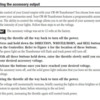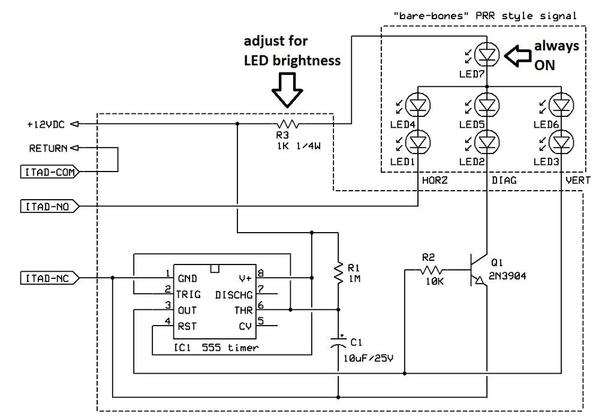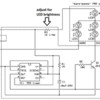I assume you're talking about a PRR-type signal head. Is it a roll-your-own with "just" 7 LEDs wired in a common-anode configuration? If so, then in round numbers (there are some i's to dot and t's to cross) the circuit applies with the vertical LEDs powered by the "green" circuit, the diagonal LEDs powered by the "yellow" circuit, and horizontal by "red"...and the common center LED always powered since it is always on.
But if you have a off-the-shelf PRR-type signal it likely has the timing components built-in and you don't need the timing circuit (the 555 timing IC chip) to perform the timing. In other words, the circuit shown earlier is appropriate for a bare-bones signal head with "just" LEDs and wires as is the case with the eBay "wehonest" red-yellow-green head.
So as with most thing in life, it depends on what you have and what you want to do! If you are looking at rolling-your-own IR detector to replace a $25 ITAD (or whatever they cost these days) with $1-2 of IR optical components to trigger the signal head, that's another issue.








